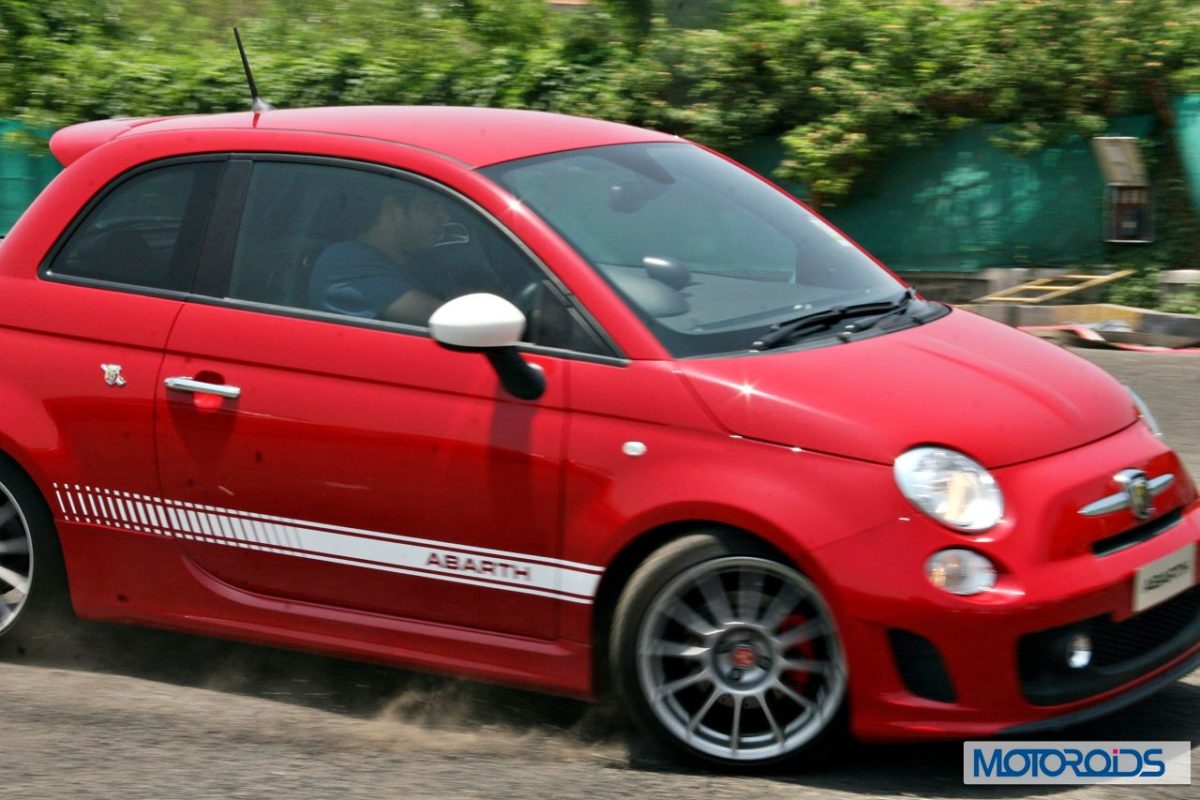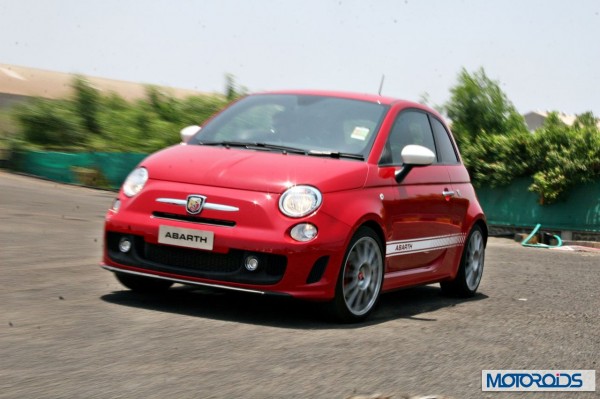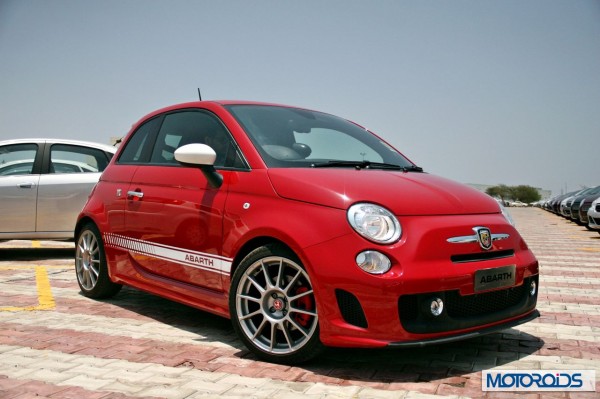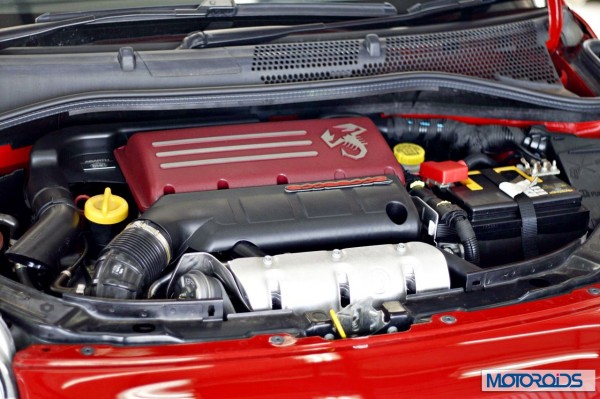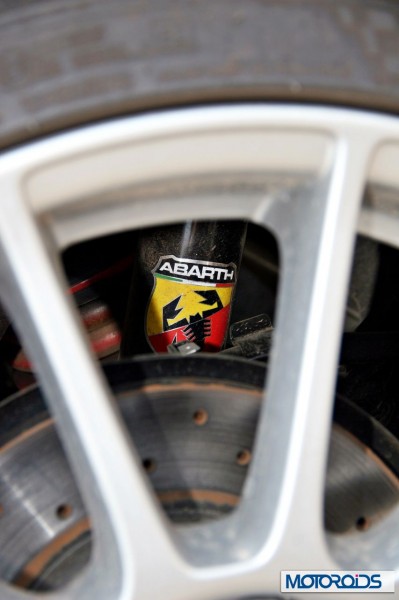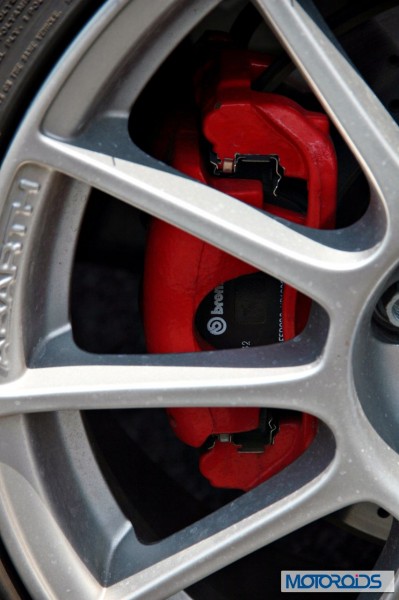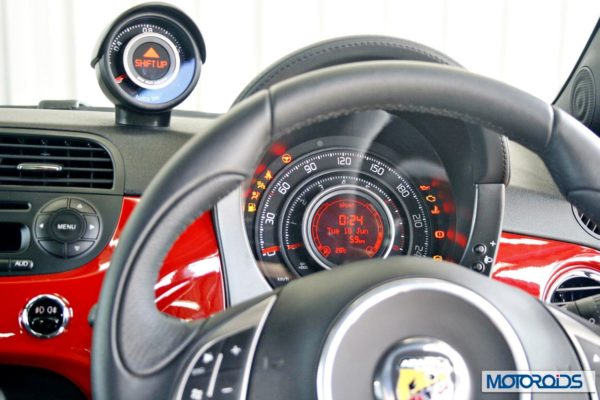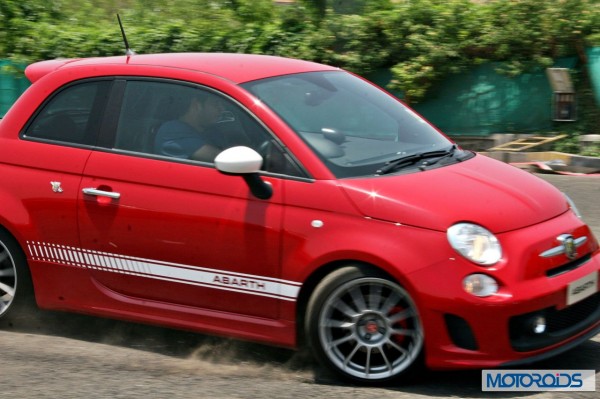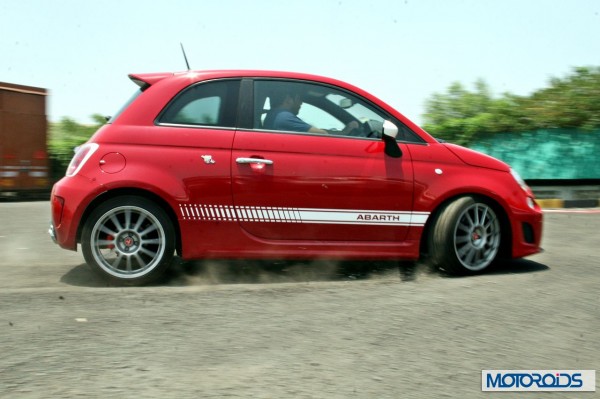It`s been ages that we remember of the Fiat 500 when it was launched in 2008. At a seemingly stratospheric price tag exceeding 15L, it wasn’t meant to sell in large volumes! Regardless of the cute design, heritage and its desirability factor it just did not appeal to the value for money conscious Indian masses. The all new rejuvenated Fiat is giving us another dose of the little Miss Italy albeit in a more potent guise – in Abarth Esseesse flavor. We sampled this pocket rocket at Fiat`s facility, and came out fairly impressed!
Images: Hanoz Patel and Amit Chhangani
Coming through the CBU route, this time the new generation Cinquecento (500) comes drenched in Abarth branding everywhere. As common with the performance editions sold by other manufacturers, the 500 loses its Fiat badges or rather earns the fabled Abarth badges it so proudly flaunts. So since the emphasis lies on what`s under the hood, let`s go there first in this Fiat 500 Abarth Esseesse review!
Whats under the hood? The hardware..
The Abarth edition is powered by Fiat`s MultiAir 1.4L 4 pot intercooled turbocharged petrol engine. This power plant pumps out 158 BHP@5500 rpm and 230 Nm of torque @3000 rpm. Pop the hood and it looks a tightly packed engine bay there, with the cast finished red engine cover bearing the Scorpion Logo and Esseesse lettering. Essentially, the MultiAir is Fiat`s nomenclature of the variable intake valve timing with electronic control. Electro-Hydraulic solenoids are employs resulting in significant improvements in torque and efficiency as intake valves are used to throttle the engine.
The Abarth also comes with twin intercoolers which is quite unique and their twin “nostrils” can be seen on the revised front bumper. Boffins at Fiat have gone to the extent of anodizing the piston top land and ring groove to make it robust, in anticipation that oil grades may not be adhered to. As a part of the Esseesse kit, the engine breathes heaps of clean air through high performance BMC airfilters. To handle this step up in power, all the internal components have been beefed up too. The potent engine is mated to C510 five speed heavy duty manual transmission which is quite fun to use with its short throw. Abarth`s transmission also features larger CV (Constant Velocity) joints that boast of a 53% increase in torsional strength over the standard 500!
Torque Transfer Control (TTC) has also been employed to ensure the optimum distribution of power to the front wheels. The TTC brakes the wheel to control the wheelspin as opposed to electronic traction control which cuts the power from the engine to prevent the wheelspin. In Sport mode, the TTC automatically keeps adjusting the degree of differential locking to minimize understeer and maximize traction. That’s some serious kit for a small car!
The Esseesse kit also brings Koni`s front shock absorbers with Frequency Selective Damping (FSD) which constantly varies the damping of the shock-absorbers to give the best balance between comfort and road hold. A precision tuned stabilizer bar at the rear helps in better cornering abilities. Both ends have lowered ride height by 0.6 inches and stiffer springs. The Abarth Esseesse gets discs brakes all around with big 11.1 inches diameter drilled ventilated rotors at the front and drilled rotors at the rear.
Fiat has always dressed their cars with some of the best looking alloy wheels. Abarth Esseesse 500 comes with gorgeous 16 inch performance alloys which have striking resemblance to the BBS alloys that are famous with the Mitsubishi Lancer Evos!
Next page for exterior and interior details>>>

